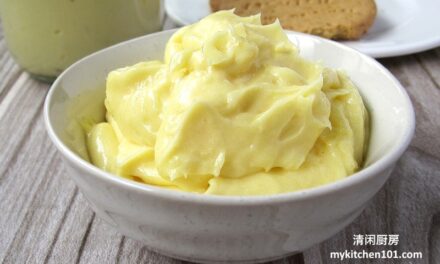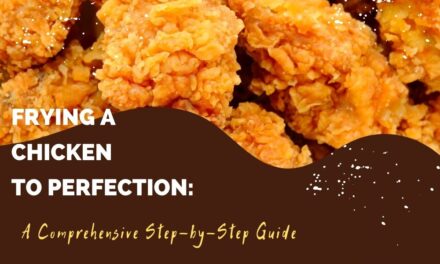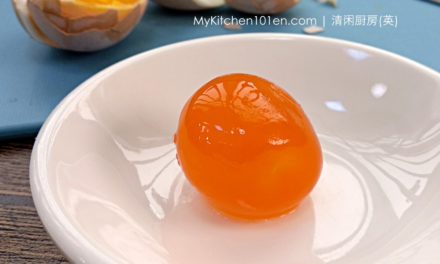Microwave: The Fastest Way to Cook Corn
Nowadays, we are all looking for ways to save time without sacrificing flavor in our meals. One of my favorite tricks to cut down on cooking time during summer barbeques is to cook corn cobs in the microwave.
Yes, you read that correctly – the microwave! Before you roll your eyes and dismiss this method as blasphemous, let me explain why.
First of all, using a microwave means no need to heat up an outdoor grill or boil water on a hot stove. Who wants to stand outside under the sweltering sun while sweating over a grill or keep an eye on boiling water? Not me! With this method, all you need is a microwave-safe plate and some fresh corn cobs with intact husks.
Not only does using your trusty microwave save time but it also conserves energy. Instead of wasting gas or electricity by heating up an entire grill or stove, you can simply pop those cobs into your trusty kitchen appliance without any fuss.
An ear of corn averages 800 kernels in 16 rows. Interestingly, a corn will always have an even number of rows on each cob. Corn always grows in even-numbered rows. This is due to the genetic makeup of corn which determines how the kernels grow. Each ear usually has 16 rows, but it can vary from 10 to 20 rows.
The result? A juicy and tender corn-on-the-cob that tastes like it was grilled or boiled.
So, if you’re someone who loves sweet buttery corn-on-the-cob but doesn’t have hours to spend cooking them traditionally, then this method is for you! Trust me; you won’t even miss those charred grill marks once you sink your teeth into these perfectly cooked corn cobs.
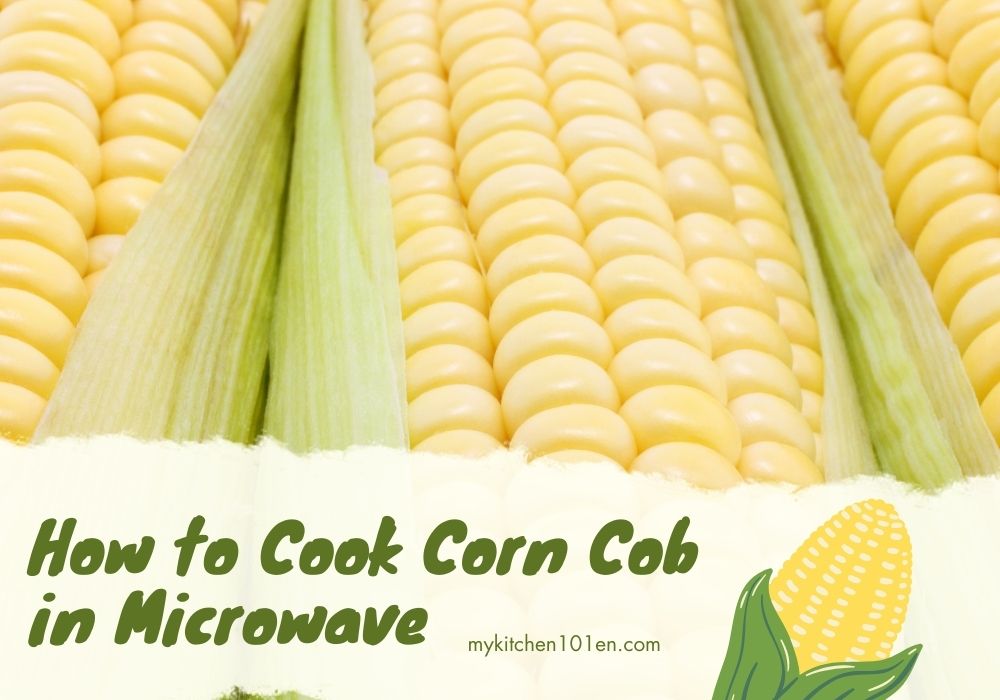
Table of Contents
Preparing the Corn Cob
Choose fresh corn cobs with intact husks
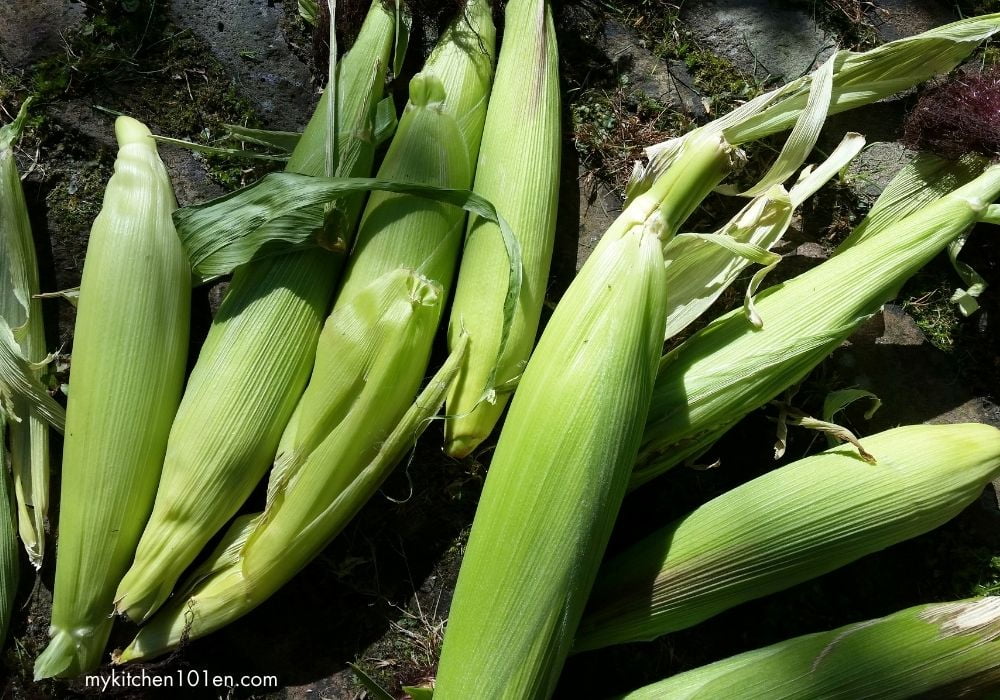
Of course, if you’re going to cook corn in the microwave, freshness is an important consideration. But how can you tell if a corn cob is fresh?
Choose fresh corn cobs with intact husks. Look for bright and plump kernels that are tightly packed together and a husk that’s bright green and free from any brown spots or blemishes.
When you press your fingernail against a kernel, it should produce a milky liquid.
If these criteria are met, then you have yourself some good quality corn.
Peel back the husks but leave them attached at the base of the cob
Once you’ve chosen your perfect cob of corn, gently peel back but don’t entirely remove the outermost layers of husk until some of the kernels are exposed. It’s crucial to keep some layers attached at the base of the cob; this will help retain the corn’s natural juices during the cooking process.
It’s worth noting that completely removing all the husk layers before cooking isn’t typically recommended. Not only does this eliminate a natural protective barrier for the corn, but it also exposes your kernels, potentially leading to moisture loss during cooking. So, it’s best to leave some husk on.
As for the silk strands – those pesky little fibers that seem to get stuck between your teeth when you’re enjoying corn – you don’t need to worry about them before cooking. Since we’re leaving some husk on the corn, it’s not easy to remove all the silk strands beforehand. But don’t fret – once your corn is cooked and the husk is fully removed, the silk strands will come off much more easily. So, save that step for after cooking.
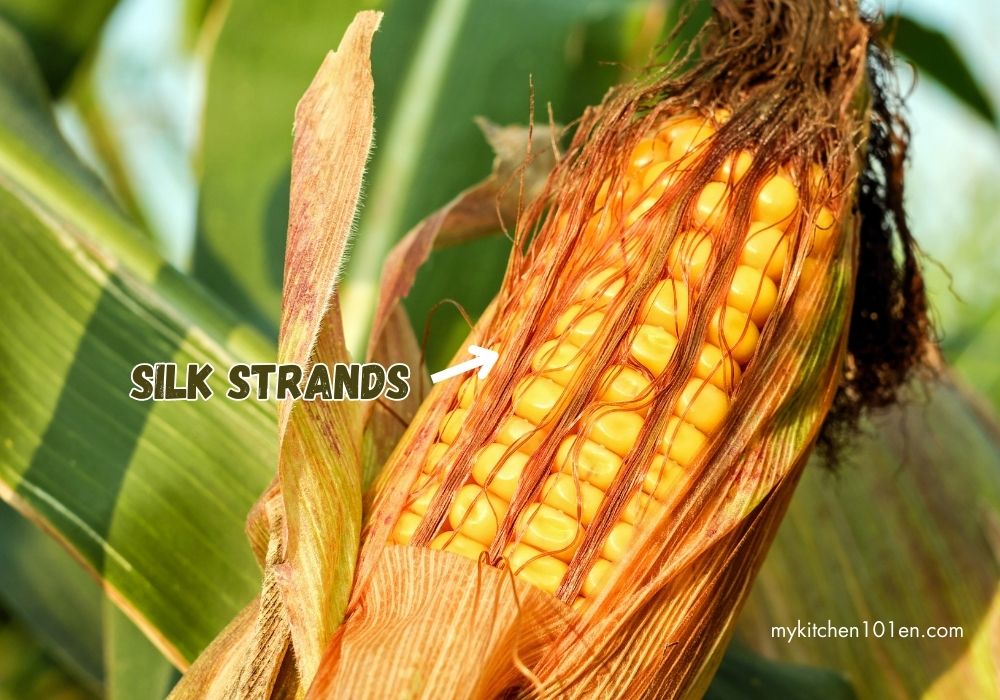

Related:
- How to Cook Artichokes
- Cooking Salmon 101
- How to Cook Hard-Boiled Eggs Perfectly
- How to Bake Potatoes In Oven
Cooking Corn in the Microwave
How to Properly Cook Corn Cob in the Microwave
Microwaving corn cob is a quick and convenient way to cook this summer staple. However, there are a few key steps you need to follow to ensure that you get perfectly cooked corn every time.
- To start, place your prepared corn cob on a microwave-safe plate. It’s important to use a plate that can withstand high temperatures and won’t warp or crack in the microwave. ( I recommend using a glass or ceramic plate if possible)
- If you’re cooking the corn without removing all the husk, it’s a good idea to dampen the husk before microwaving. This will provide some extra moisture and help the corn steam as it cooks, resulting in more even cooking, juicy and tender kernels. Simply run the husk under some water to dampen it. On the other hand, if you’ve chosen to remove all the husk and silk strands from the corn, then you’ll need to take a different approach. In this case, after placing the corn on a microwave-safe plate, cover it with a moist paper towel. This will mimic the effect of the husk, helping to retain moisture and prevent the corn from drying out during the microwave cooking process.
- Now it’s time to cook! Cook on high heat for 3-5 minutes. Don’t overcook it, or else you’ll end up with mushy or tough kernels.
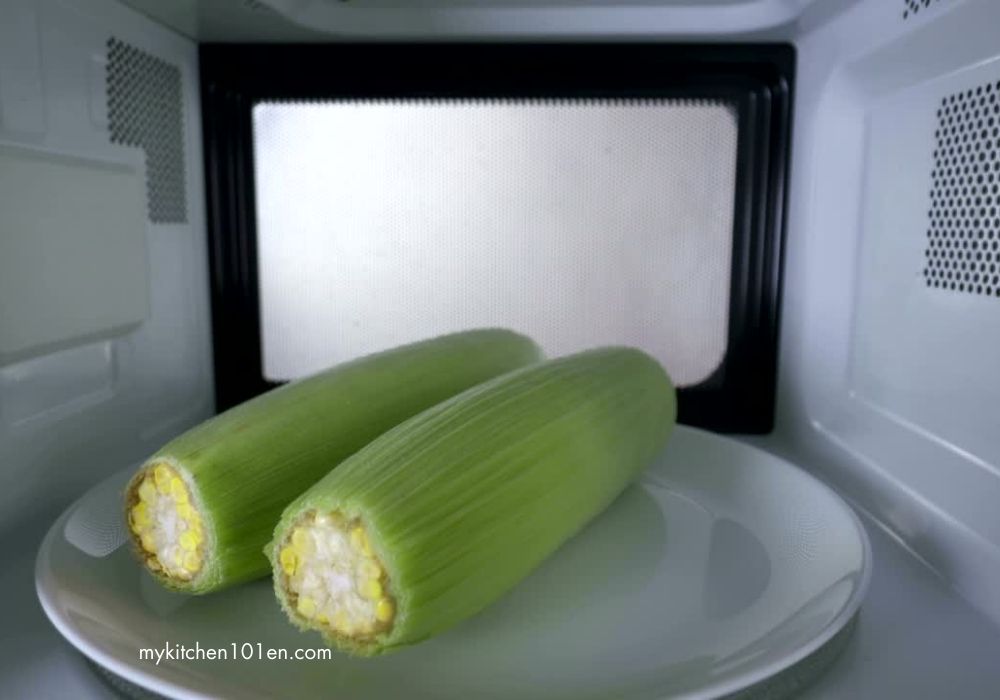
How Long to Cook Corn with Husk in Microwave
Based on common cooking guides, the average cooking time for a corn on the cob in a microwave usually ranges from 3 to 5 minutes per ear, depending on the power of the microwave and the size of the corn. Cooking times for different quantities of corn on the cob in a table format:
| Quantity of Corn on the Cob | Average Cooking Time (Minutes) |
|---|---|
| 1 ear | 3-5 |
| 2 ears | 4-6 |
| 3 ears | 5-7 |
| 4 ears | 6-8 |
Please note that these are average times and actual cooking times may vary. Always check the corn for doneness before serving.
The Benefits of Cooking Corn Cob in Microwave
Let’s talk about why microwaving your corn cob is an excellent choice for busy summer nights when you want something quick and easy but still delicious.
Firstly, cooking corn in the microwave saves time and energy compared to boiling or grilling it. You don’t have to wait for water to boil or preheat a grill before cooking with it.
Secondly, microwaving preserves more nutrients than boiling does since boiling causes some vitamins and minerals to leach out into the water. Microwaving allows these essential nutrients like Vitamin C, folate, and antioxidants to remain intact since they’re not being submerged in water.
Microwaving makes cleaning up after dinner super easy since there are no pots or pans involved – just toss away any paper towels used and wash the plate.
My Tips for Cooking Corn Cob in Microwave
Here are a few of my personal tips for cooking corn cob in the microwave that will help you get the best results possible:
- Choose fresh cobs with intact husks.
- Do not remove all husk from the corn cob before cooking with a microwave.
- Run the husk under some water to dampen it
- Arrange the cob in a circle on the plate so that they cook evenly.
- Always use oven mitts or a towel when handling hot corn cob.
Following these tips will ensure that you have tender and flavorful corn on the cob every time you microwave it!
Safety Tips
Protect Your Hands, Protect Yourself

When using the microwave, safety should always be your top concern. Protecting your hands is a crucial part of that.
As with any hot food, the corn cob will be extremely hot when it comes out of the microwave.
To ensure you don’t burn your hands or fingers, it’s essential to use oven mitts or a towel when handling the cob.
Don’t Overdo It
Another safety tip worth remembering is not to overcook your corn cob in the microwave.
While cooking times can vary depending on the size and power of your microwave, as well as how many cobs you’re cooking at once.
If you cook them for too long, you risk ending up with dry and tough kernels that are no fun to eat.
Not only will this ruin your enjoyment of what should be a delicious summer treat, but it could also cause harm if anyone tries to bite into a particularly hard kernel and ends up chipping their tooth!
Seasoning Options For Corn On The Cob
Can you imagine a perfect summer meal without some deliciously seasoned corn cobs on the side? You can’t, right? That’s exactly why it’s important to know all about seasoning options for your corn cob before you cook it in the microwave.
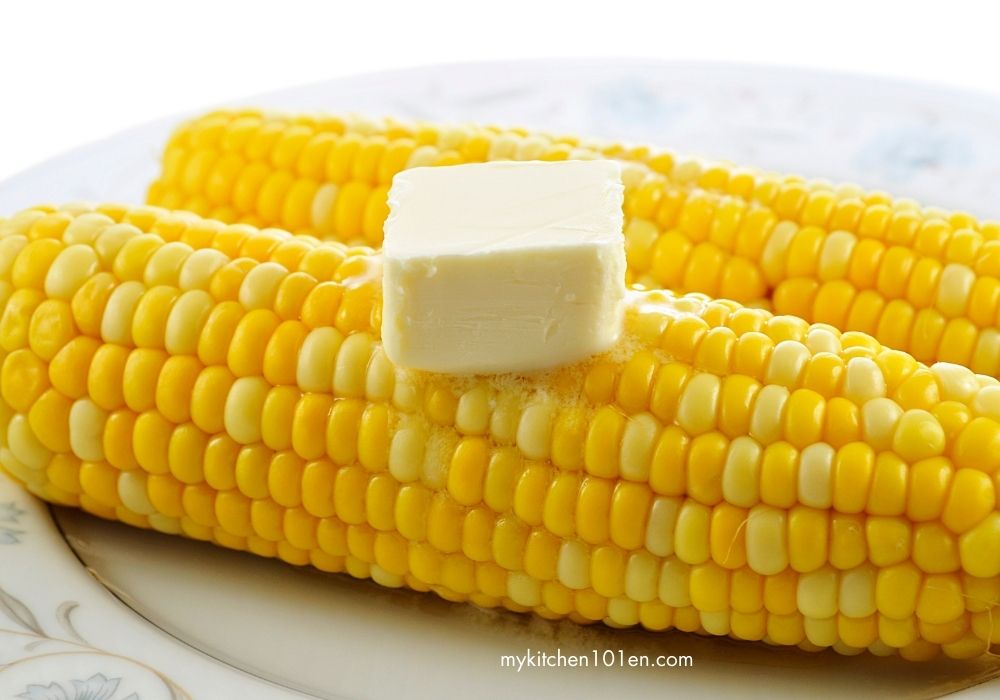
Butter, Salt, and Pepper – The Classic Choices
Butter, salt, and pepper are the classic choices when it comes to seasoning corn cob. You really can’t go wrong with these if you’re looking for simplicity and familiarity.
However, if you want to take things up a notch, then try adding some herbs like basil or thyme. They add an earthy flavor that pairs really well with sweet corn.
If you’re watching your salt intake or if you find that salt masks the natural sweetness of the corn cob, then try using garlic powder instead of salt. It adds a nice kick of flavor without overpowering the sweetness of the corn.
Creative Combinations – Let Your Imagination Run Wild
If you’re feeling adventurous or want to experiment with new flavors, then try some creative seasoning combinations on your cooked corn cob:
- One great example is garlic and parmesan cheese – which creates a savory umami flavor that complements sweet corn perfectly.
- Another great option is chili powder and lime juice – which adds a zesty kick of heat and sourness that pairs well with grilled meats or fish.
- Add some hot sauce or salsa to your cooked corn for extra flavor.
Ways To Serve Corn On The Cob
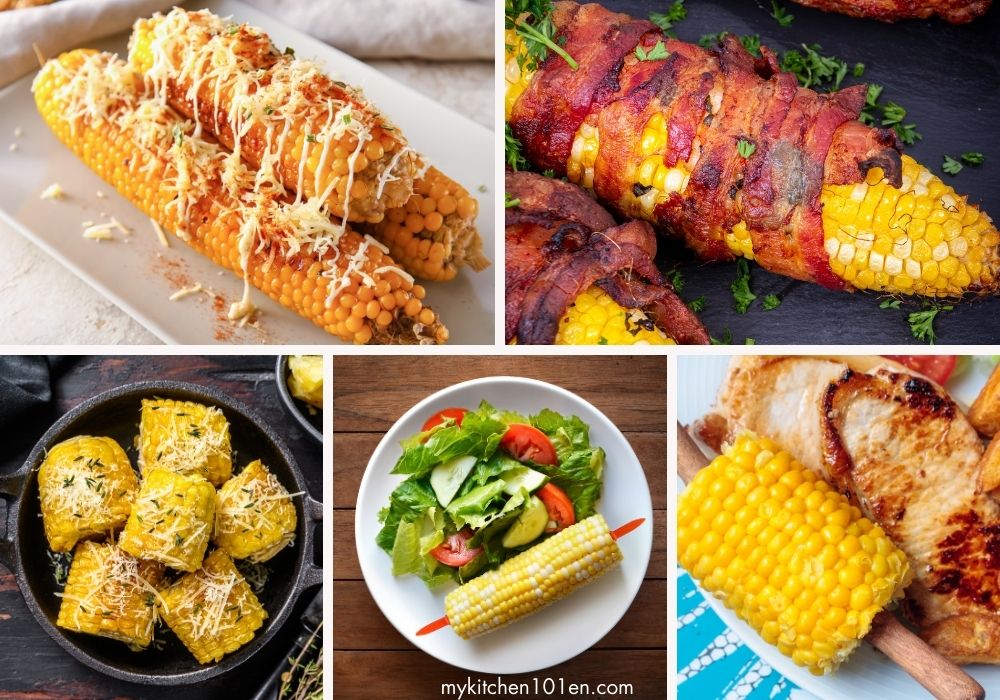
Get Creative with Seasonings and Toppings
Plain corn on the cob is great, but why not take it up a notch with some creative seasonings and toppings?
- Brushing on some melted butter & sprinkling some garlic powder or paprika
- Sprinkle on some grated parmesan or cheddar cheese for a cheesy twist
- Add some crumbled bacon bits for a smoky crunch
- Mix together cumin and chili powder for a Mexican-inspired flavor
- Add some hot sauce for a kick
Be creative with your toppings; try mixing in different herbs to give a dish an unexpected boost of flavor.
Pairing with Other Summer Favorites
Corn on the cob is a staple summer dish, but it’s even better when paired with other seasonal favorites.
- Grilled meats like burgers, hot dogs or chicken complement the sweet flavor of corn perfectly.
- Grilled shrimp skewers or salmon fillets for a more sophisticated pairing
- A fresh summer salad for something lighter. A simple green salad with cherry tomatoes and avocado pair well with corn’s sweet taste.
- Or, a coleslaw using shredded cabbage and carrots dressed in a tangy vinaigrette
The Perfect Side Dish for Any Occasion
No matter what else you’re serving up at your summer BBQ or weeknight dinner party, adding cooked corn on the cob as one of your side dishes is sure to please everyone at the table.
It’s easy to prepare in advance by microwaving them shortly before guests arrive so you can focus on other parts of your meal without worrying about the timing of your corn. And with all the creative seasoning and topping options, you can customize each cob to suit your guests’ preferences.
So go ahead and add this versatile, crowd-pleasing dish to your next menu. With a little creativity and imagination, there are endless ways to enjoy cooked corn on the cob in the microwave.
Nutritional Information for Corn on the Cob
Corn on the cob is not only delicious but also packed with nutrients. Here’s a breakdown of the nutritional content of a typical serving of corn on the cob:
| Nutrient | Amount | % of Daily Value |
|---|---|---|
| Serving Size | 1 cob (146 g) | – |
| Total Calories | 155 | – |
| Fat Calories | 30 | – |
| Total Fat | 3 g | 5% |
| Saturated Fat | 2 g | 8% |
| Cholesterol | 6 mg | 2% |
| Sodium | 29 mg | 1% |
| Total Carbohydrates | 32 g | 11% |
| Protein | 4 g | 9% |
| Vitamin A | – | 8% |
| Vitamin C | – | 11% |
| Iron | – | 5% |
| Thiamin | – | 17% |
| Riboflavin | – | 6% |
| Niacin | – | 11% |
| Vitamin B6 | – | 16% |
| Folate | – | 11% |
| Phosphorus | – | 11% |
| Magnesium | – | 10% |
| Zinc | – | 6% |
Please note that the percent daily values are based on a 2000-calorie diet. This nutritional profile makes corn a good source of many essential nutrients, including dietary fiber, vitamins, and minerals. Enjoying corn on the cob as part of a balanced diet can contribute to overall health and well-being.
Boil vs. Microwave Corn On The Cob, Which Is Better?
To boil or to microwave corn on the cob? Well, let me tell you, both methods have their merits, and it really comes down to what you’re looking for in your corn-cooking experience.
Boiling is the old-school, tried-and-true method. It’s like your grandmother’s favorite recipe – reliable and comforting. You just dunk the corn into a pot of boiling water and let it do its thing. It’s a fantastic choice when you’re feeding a crowd because you can toss in several ears of corn at once.
On the flip side, we have the modern marvel of microwaving. It’s quick, it’s efficient, and it’s oh-so-easy. Just pop an ear of corn into the microwave and in a few minutes, you’ve got yourself a hot, juicy cob. It’s perfect for those nights when you’re just cooking for one or two, or when you’re in a rush.
So, which is better? Well, that’s like asking me to choose my favorite child. If you’re all about convenience and speed, then microwaving is your best friend. But if you’re cooking for a big family gathering and you want to stick with tradition, then boiling is your go-to. In the end, it’s all about what works best for you.
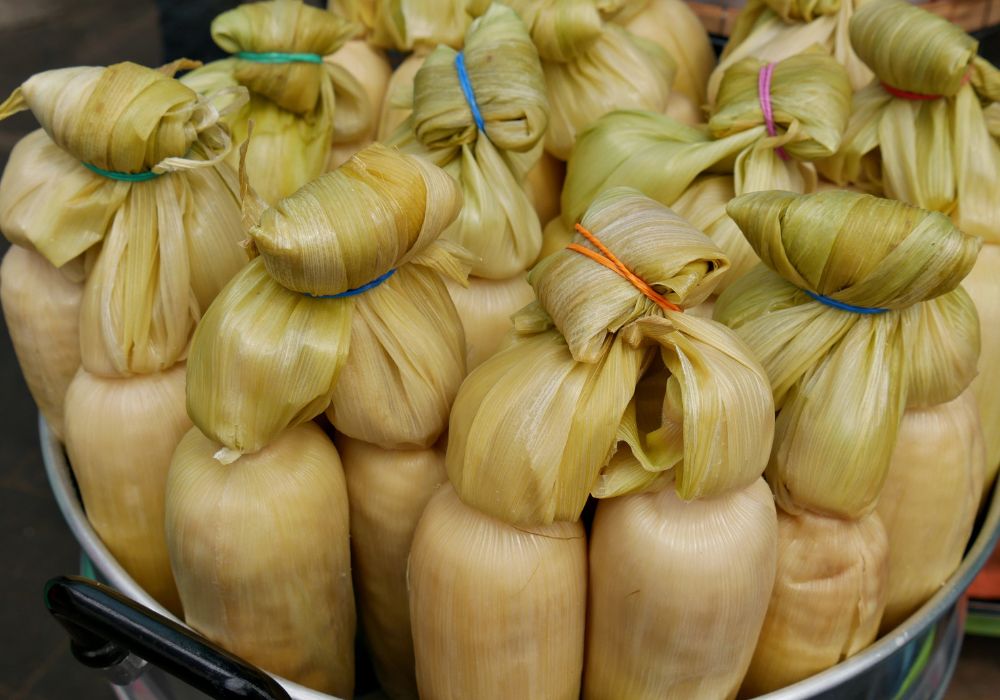
Conclusion
In conclusion, microwaving corn cob is a fantastic, quick, and easy method to enjoy this summer delicacy.
Experiment with different seasoning combinations and cooking times until you find your perfect match. And who knows – maybe one day we’ll all be microwaving our corn instead of boiling it. Happy corn cooking!

Frequently Asked Questions
How long does it take to cook a corn cob in the microwave?
It takes about 3 to 5 minutes. However, this can vary depending on the size of your corn and how powerful your microwave is.
Can I cook more than one corn cob at a time in the microwave?
Yes, you can cook more than one corn cob at a time. In this case, increase the cooking time by a few minutes. Arrange them in a circle on your plate so that they will all finish cooking at approximately the same time.
Is it safe to cook corn in the microwave?
Yes, it’s safe to cook corn in the microwave as long as you follow the necessary precautions. Remember to use oven mitts or a towel when handling hot cobs and don’t overcook them.
Can I remove the husk before microwaving the corn cob?
It is recommended to leave some layers of husk attached to the corn cob while microwaving. The husk helps in retaining moisture and keeps the corn juicy and tender.
Can I add seasonings before microwaving the corn cob?
Seasoning your corn on the cob before microwaving is optional but recommended for added flavor. You can use butter, salt, pepper, or other seasonings of your choice.
Can I cook frozen corn on the cob in the microwave?
Yes, you can cook frozen corn on the cob in the microwave. Simply place the frozen corn on a microwave-safe plate and cook for about 5-7 minutes, or until heated through and tender.
Is it safe to microwave corn on the cob in a plastic bag?
It is safe to microwave corn on the cob in a plastic bag if the bag is microwave-safe and designed for cooking. Always follow the manufacturer’s instructions for using microwave-safe bags.

